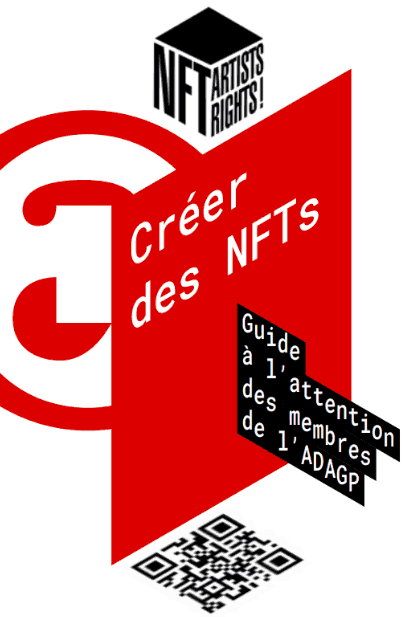
"Creating NFTs" guide
This guide outlines the practical and legal aspects of setting up an NFT. It also provides a brief overview of the tools available for getting started with blockchain.


The irruption of NFTs on the art market has given rise to speculation on an unprecedented scale in recent months. All over the world, many operators have launched, often in haste, initiatives aiming to offer for sale new or pre-existing works attached to these digital tokens registered in the blockchain.
If NFTs offer a relevant answer to the problem of selling digital artworks, by allowing artists to individualize dematerialized originals, other uses that go beyond this initial framework have quickly emerged. In particular, non-fungible tokens are increasingly used to market digital copies of works fixed by the artist on a physical medium such as a painting or a sculpture, often without the cooperation of the artist or his beneficiaries. In addition, some digital artworks associated with an NFT reproduce works by other artists without their consent or that of their estate.
It is important that the market players keep in mind the basic legal rules that apply, at the risk of being held liable.
It must be recalled, in the clearest way, that according to the rules applicable to copyright, established at an international level, any reproduction and any communication to the public of a work of art, whether it is partial or total, can only take place with the consent of the artist or his successors. In the absence of authorization from the rights holder, it is legally an infringement that can lead to civil and/or criminal proceedings.
The commercialization of a work associated with an NFT is not exempt from this rule: no one is allowed to offer a digital work on a sales platform, nor to inject it into a metaverse, without the agreement of the artist or his beneficiaries (heirs, foundations…). The usurpation of the identity of an artist can also give rise to, on other legal grounds, to heavy sanctions.
It is the responsibility of anyone considering an NFT project related to an artist’s work to ensure that the necessary authorizations are obtained from the relevant rights holders or copyright collective management organizations.
Technology is the ally of creation when it is deployed in a way that respects artists’ rights. The NFT market must be built in a well thought-out and structured way, so that the technological and economic models that are being developed are legally secured, in the interest of all stakeholders.

This guide outlines the practical and legal aspects of setting up an NFT. It also provides a brief overview of the tools available for getting started with blockchain.